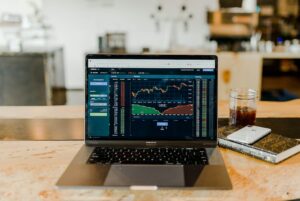Forex Trading Guide: Understanding Technical Analysis
Introduction:
In the world of forex trading, technical analysis plays a crucial role in predicting future price movements. Traders use various tools and indicators to analyze historical price data and identify patterns that may indicate potential trading opportunities. Understanding technical analysis is essential for any trader looking to make informed decisions and maximize their profits in the forex market.
What is Technical Analysis?
Technical analysis is a method of predicting future price movements by analyzing historical data, including price and volume. Unlike fundamental analysis, which focuses on economic indicators and news events, technical analysis is solely based on price action and aims to identify patterns and trends that can help traders make informed trading decisions.
Key Concepts of Technical Analysis:
1. Support and Resistance:
Support and resistance levels are key concepts in technical analysis. Support is a level at which buying pressure is strong enough to prevent prices from falling further. Resistance, on the other hand, is a level at which selling pressure is strong enough to prevent prices from rising further. Identifying support and resistance levels can help traders determine potential entry and exit points for their trades.
2. Trend Analysis:
Trend analysis is another essential component of technical analysis. Traders use various tools, such as trend lines and moving averages, to identify the direction in which prices are moving. By trading in the direction of the prevailing trend, traders can increase their chances of success. There are three types of trends: uptrend, downtrend, and sideways (consolidation).
3. Indicators:
Technical indicators are mathematical calculations based on historical price and volume data. Traders use indicators to generate trading signals or confirm the strength of a trend. There are various types of indicators, including oscillators (such as the Relative Strength Index – RSI) and trend-following indicators (such as the Moving Average Convergence Divergence – MACD).
Common Technical Analysis Tools:
1. Candlestick Charts:
Candlestick charts are a popular tool used in technical analysis. They provide a visual representation of price movements over a specific time period. Each candlestick represents a specific time frame (e.g., 1 hour, 4 hours, daily) and consists of a body and wicks. The body represents the opening and closing prices, while the wicks represent the high and low prices during the time frame.
2. Moving Averages:
Moving averages are widely used to identify trends and support/resistance levels. They smooth out price fluctuations by calculating the average price over a specified period. Traders often use two moving averages, one shorter-term (e.g., 50-day) and one longer-term (e.g., 200-day), to identify potential buying or selling opportunities when the shorter-term moving average crosses above or below the longer-term moving average.
3. Fibonacci Retracement:
Fibonacci retracement is a tool based on the Fibonacci sequence, a mathematical sequence where each number is the sum of the two preceding ones (e.g., 1, 1, 2, 3, 5, 8, 13, etc.). Traders use Fibonacci retracement levels (38.2%, 50%, and 61.8%) to identify potential support and resistance levels. These levels are drawn by connecting the high and low points of a trend and dividing the vertical distance by the Fibonacci ratios.
Using Technical Analysis in Forex Trading:
Technical analysis is widely used by forex traders to support their trading decisions. By analyzing historical price data, traders can identify potential entry and exit points, manage their risk, and maximize their profits. However, it’s important to note that technical analysis is not foolproof and should be used in conjunction with other forms of analysis, such as fundamental analysis and risk management strategies.
Conclusion:
Understanding technical analysis is essential for any forex trader looking to navigate the complex and volatile foreign exchange market. By studying price patterns, identifying support and resistance levels, and using various technical indicators, traders can make more informed decisions and increase their chances of success. However, it’s important to continually learn and adapt as the market evolves, as no single strategy or tool guarantees consistent profitability. Remember to combine technical analysis with other forms of analysis and always practice proper risk management.






